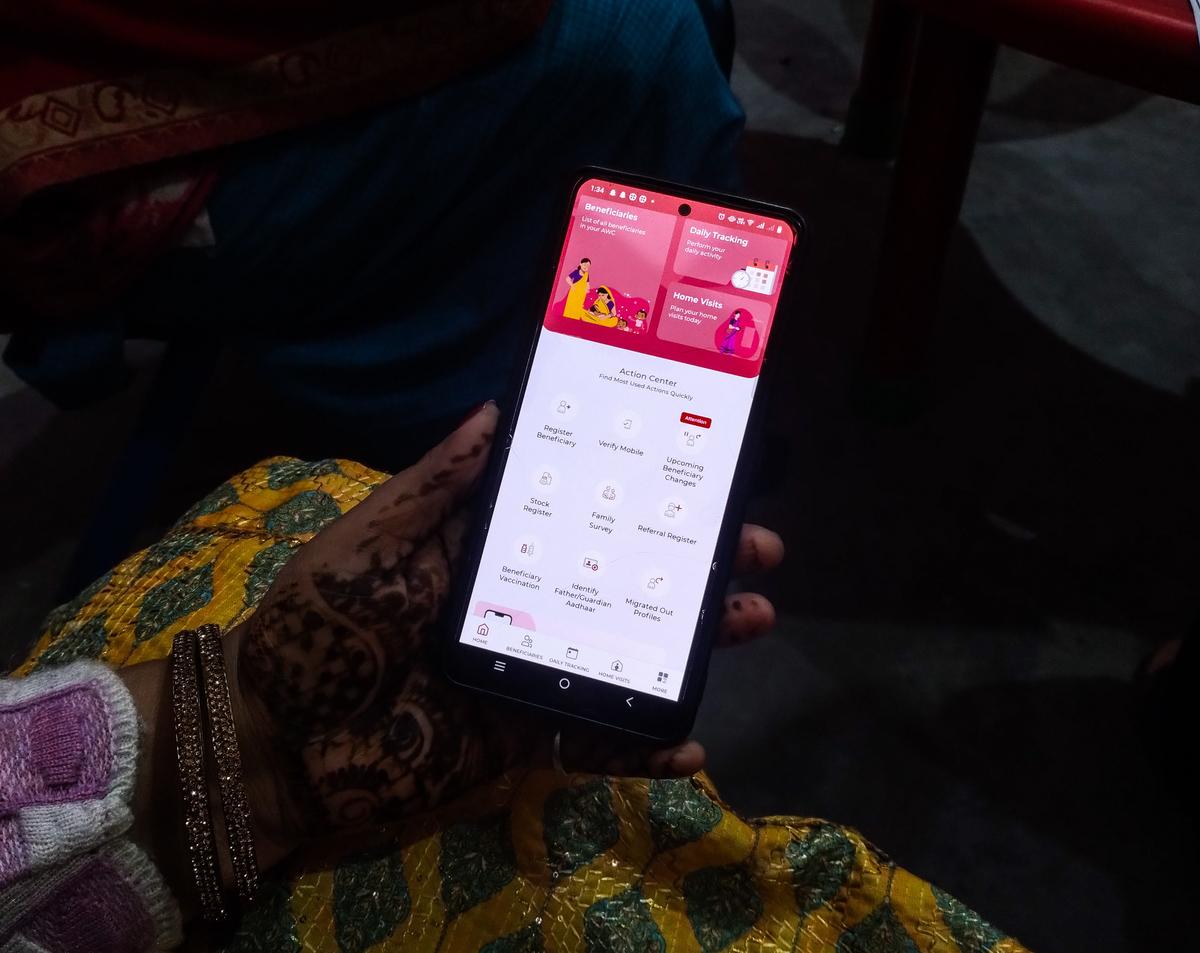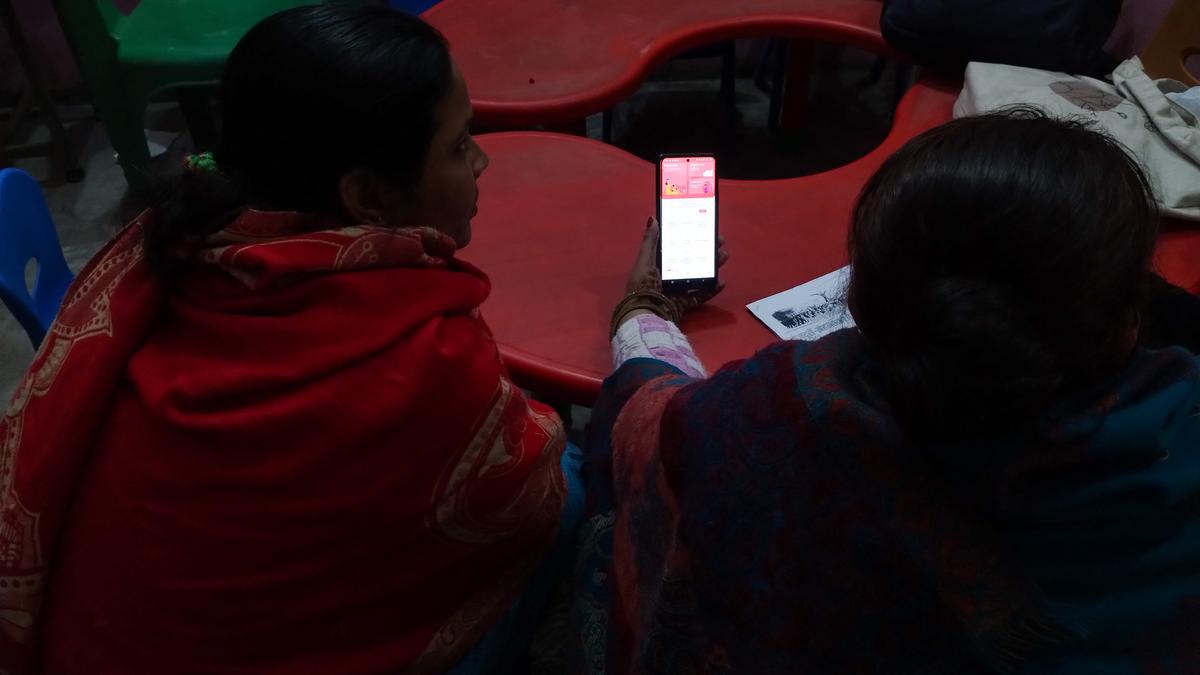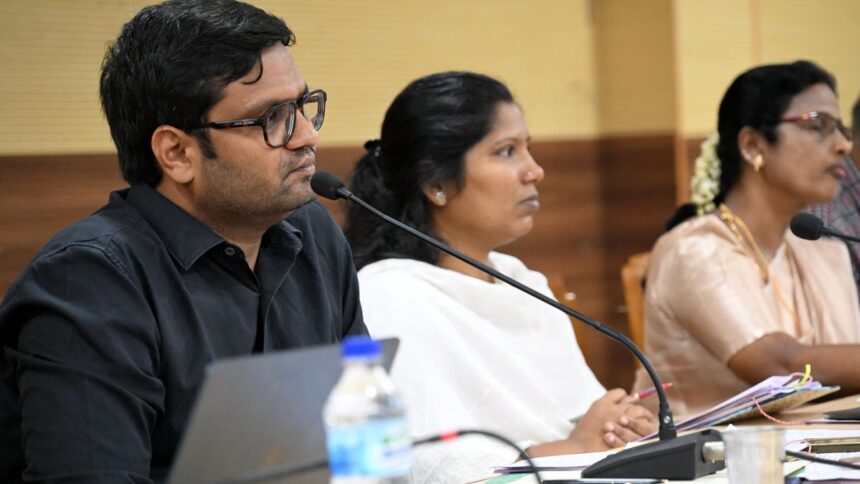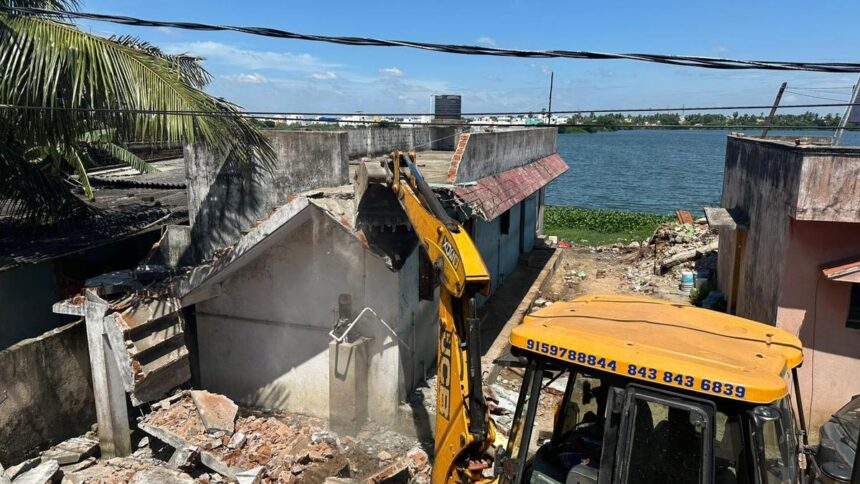
Anganwadi workers in Delhi using the Poshan Tracker app.
| Photo Credit: SPECIAL ARRANGEMENT
Over the past few weeks, Seema*, 45, an anganwadi worker in north-east Delhi’s Bhalswa Dairy, has been making extra trips between her anganwadi centre and the houses of the beneficiaries in her charge to upload their photos on the Poshan Tracker app.
In an order issued last month, the Union Ministry of Women and Child Development made face recognition authentication mandatory for anganwadi beneficiaries, comprising pregnant and lactating mothers, as well as children up to the age of six, effective from July 1. The circular directed anganwadi workers to complete the authentication process through the beneficiaries’ Aadhaar e-KYC ahead of the deadline on the Poshan Tracker, rolled out in 2021 to monitor the implementation of the scheme and track the growth of children.
“Sometimes, the photos don’t get uploaded as the application does not recognise the face. Moreover, we also face issues with Internet connectivity. So we have to ask the beneficiaries to return to the centre later or we have to track them down at their house when the Internet issue is resolved,” Ms. Seema says.
Like Ms. Seema, many anganwadi workers in Delhi told The Hindu that they have been facing technical challenges in complying with the Ministry’s May 30 order, which has also increased their workload without offering extra compensation.

An anganwadi worker said that over the past few weeks, she has visited a beneficiary’s house at least four times for a task that could have been completed in a single trip.
| Photo Credit:
SPECIAL ARRANGEMENT
Earlier, when women collected rations, their details were entered on the app and noted in a logbook.
‘Foregoing wages’
An anganwadi helper in Bhalswa Dairy said, “Women who come to the centre have to forego their daily wage or leave their infants in someone else’s care. It’s not easy for them to keep making rounds. On average, we spend 20 minutes trying to upload the photo, but the application keeps crashing.”
In the past few weeks, she says that she has visited a beneficiary’s house at least four times for a task that could have been completed in a single trip.
Under the Integrated Child Development Services scheme, anganwadi workers and helpers are tasked with providing supplementary nutrition for infants, lactating and pregnant mothers, freshly cooked meals at the anganwadi centre, and early childhood education, as well as health check-ups and immunisation for children up to six years. There is now an element of technology involved in each of these tasks. Each task now takes an additional two to three hours, say anganwadi workers.
‘Impact on beneficiaries’
On June 22, the Delhi State Anganwadi Workers and Helpers Union issued a statement, saying, “Anganwadi workers have repeatedly complained that the app often fails to open, crashes, or refuses to accept basic data such as height and weight. And now, facial recognition has been added to this flawed system.”
The union president, Shivani, said, “Facial recognition is not only increasing the workload, but also impacting the beneficiaries. For instance, a growing child’s facial features keep changing, so the app often fails to recognise the child’s face when a worker tries to upload it, which causes the beneficiaries to lose out on the benefits.”
An anganwadi helper in Sonia Vihar said, “Many workers have been asking their children to help them with the technology. We were given basic training during the pandemic, but that is not enough, and we keep facing technical issues that we do not know how to resolve.”
When reached for comment, the Ministry did not respond.
*Name changed on request
Published – July 07, 2025 01:44 am IST




















